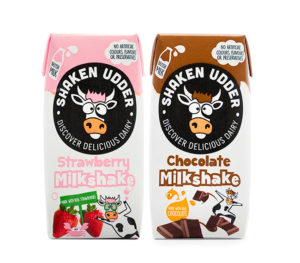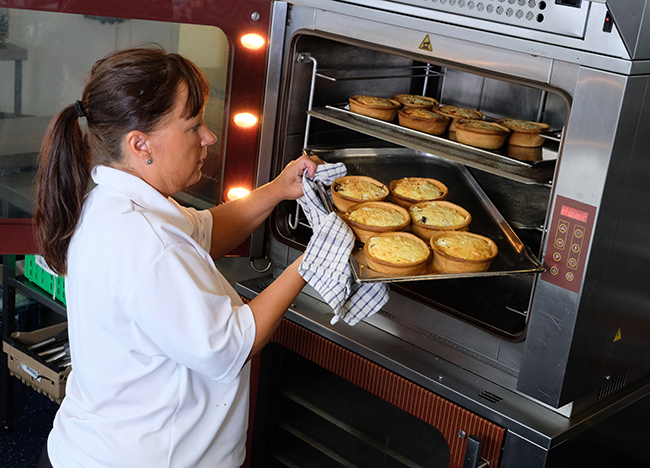Class act: tips and tricks for school catering
From turkey twizzlers and chips with everything to jackfruit, jollof and spiralised pumpkin, school meals are upping their game. Richard McComb looks at the changing face of canteens
School meals remain a topic of fierce political debate, as policymakers, catering operators and cooks wrestle with the competing challenges of nutrition, childhood obesity, allergies, intolerances and education budgets.
Pressure for greater canteen regulation is increasing, with the most recent proposal calling for food to come under the control of Ofsted, the schools inspection service. The charity School Food Matters surveyed people about the governmentâs new Healthy Schools Rating System, which will monitor compliance with statutory food standards. Three-quarters of parents believe the ratings system, which also covers curriculum provision of cooking and nutrition, should be monitored by Ofsted.
Revised school standards have been in force since 2015 in the wake of an independent review by the founders of Leon restaurants, Henry Dimbleby and John Vincent, and the pace of change is gathering as caterers grapple with new cultural and dietary requirements.
Amy Teichman, quality and nutrition manager at AiP, says: âThe biggest challenge in vegetarian catering is that the trend is moving more towards veganism. It makes it much easier for the school kitchen, as well as being more sustainable and cost-effective, to try and make our vegetarian offer vegan as well.
âWhile it is easy to buy pre-made vegetarian and vegan options, they tend to be heavily processed with lots of salt and sugar, which we like to limit. We try to make vegetarian and vegan food from scratch where possible, using world flavours and street food-style concepts, which go down well with students who are influenced by fast food and high street brands.â
Variety is the spice of menu life, according to Adrian Greaves, foodservice director at Youngâs Foodservice. Grab-and-go options, new twists on traditional dishes and a fusion of global cuisines can all revive tired lunch services.
âMore and more children are willing to try new food due to the wider choice on the UKâs high streets. This gives school caterers more opportunity when it comes to constructing an appealing menu,â says Greaves.
Youngâs MSC-certified salmon and Alaska pollock pieces can be used straight from frozen in a variety of ways, such as in fish pies, pasta bakes, curries and noodles, and are a good source of omega-3. Tapping into the trend for Mexican-inspired wraps, Youngâs MSC mini battered fillets can be topped with salads, salsa or sweetcorn relish.
Grab-and-go food is a great way of getting children to increase their vegetable consumption. Rob Owen, executive development chef at Creed Foodservice, advises caterers to consider pasta pots, homemade pizza and quesadillas. âBlending vegetables into a sauce will increase the vegetable uptake, or wilt spinach into dishes like lasagne, or use spiralised pumpkin or courgette as a pasta alternative,â says Owen.
Formulating a free-from menu
Tildaâs 50:50 mix of wholegrain and white rice is naturally gluten-free, can take on a number of flavours and is an ideal ingredient for starters, mains and desserts. New-wave Mexican food, West African (jollof rice, chicken yassa) and Indian street food are all tipped as trends for 2019 and Annette Coggins, head of foodservice at Tilda UK, expects to see them come to the fore as schools diversify their food offer.
âWith the UK street food market now estimated to be worth over £1.2b, incorporating these tastes into dishes will enable school caterers to enhance their menus,â says Coggins. âRice plays an integral part in Mexican, West African and Indian cuisines, making it the perfect ingredient for school caterers to provide a variety of exciting dishes around these flavour trends.â
Products like Major Mari Bases by Major International are gluten- and nut-free and meet Food for Life standards. The company has school-compliant recipes on its website, such as Korean meatballs, rice and steamed aubergine.

Baked potatoes have the benefit of being rich in vitamins C and B6, fibre, potassium and antioxidants, and can be served with traditional toppings like cheese or baked beans or pimped with pulled pork or Thai curry. Sweet potatoes are another option.
Richard Jones, commercial director â" out of home for McCain Foodservice, expects economic uncertainty to increase the move towards buying British. McCainâs Chef Solutions Simply range is 100% British and can help schools work towards their Food for Life Bronze, Silver and Gold awards by championing local produce.
âWhen it comes to suppliers, school caterers should be looking to those businesses that are taking sustainability seriously across every aspect of their company,â says Jones. âAreas for consideration include energy, water and mileage reduction levels, and whether they are BSI accredited.â
Picky palates
Sometimes it helps to see products with a childâs eyes. For example, food ingredients producer Macphie produced a cake mix that was full of fruit pieces and buyers loved it, but according to Imogen Sherrit, category marketing manager for Macphie: âThe school cooks took one look at the cake and told us the children would just pick out the fruit pieces.
âItâs one of the enduring truths of catering to children. Their very strict likes and dislikes are a challenge for anyone providing food on a budget.â
The solution? âWe used a reduced-sugar cake that you can add coloured fruit powder to. It hits the requirement for reducing sugar by 2020 and gets some goodness into them. Health by stealth,â says Sherrit.

Limited preparation time and allergen control makes ready-to-use sauces an attractive option in some canteens. Dolmio Professional and Uncle Benâs sauces meet school guidelines and are suitable for gluten-free and vegetarian diets, according to Alison Smith, product developer for Mars Food Europe.
âFrom sauces such as tikka masala and sweet and sour to our brand new katsu sauce, school caterers can create a tasty, exciting world offering,â says Smith.
 
School meals are no different to other areas of the catering industry with regards to adopting new technology. JJ Foodserviceâs new âEstimated Time of Arrivalâ feature allows customers to know, to the nearest minute, arrival times. Terry Larkin, JJ Foodserviceâs group general manager, says: âOur drivers send an email notification when the order has been dispatched and once again when they are a few minutes away. As a result of understanding the need for convenience and service, we have increased our business with the education sector by 20% in 2018.â
Ready-made complements scratch cooking
St Wilfridâs Catholic high school and sixth-form college in Wakefield, West Yorkshire, offers food built around seasonal, local ingredients with supply chain traceability.
There are nine different catering outlets across the site with a catering team of 20 offering choices for breakfast, break and lunch.
With a focus on scratch cooking, pastry was a challenge.
Catering manager Babs Askham says: âWe would often be in the kitchen from 6am to make pastry for the day.â
Askham met ready-to-fill pastry supplier Pidy and now uses the firmâs cases for a range of dishes. She says: âThe rustic, handmade finish complemented our menu and allowed us to concentrate on the nutritional value and flavour of the filling.â
âIt takes a massive amount of time to produce the quantity of food needed on a daily basis. Using a ready-to-fill product delivers efficiencies across the department, but still means we can offer homemade dishes.
âWe use a range of sweet and neutral pastry from Pidy, filling the tarts with meats, vegetables, seasonal fruits and homemade custards.â
Micro-kitchens transform school meals
Some schools in Hull relied on serveries and transported meals rather than food cooked in their own conventional kitchens. To boost the take-up of meals and improve quality, Hull introduced micro-kitchens to cook fresh meals at sites that did not have existing facilities.
Micro-kitchens are smaller due to their lack of dedicated ventilation canopies, which is a major cost-saving. The units include a Navioven table-top oven, a separate six-grid convection oven, a baked potato oven, microwave and hot servery counter.
The Navioven is used for baking, simmering, core-temperature simmering, braising and regenerating food. Manufactured by BGL Rieber, Naviovens are used at six city schools. Bridget Wray, unit supervisor at Endsleigh Holy Child Voluntary Catholic Academy, says lunch service has been âtransformedâ.
âWhen we served meals from another kitchen, we catered for 110-150 meals daily,â recalls Wray. âWith the micro-kitchen, itâs 230 meals daily. Cooking fresh has made all the difference.â
Wray uses the Navioven for bread, casseroles, pasta, pies, cakes and biscuits. Fried eggs can even be cooked on the floor of the oven.
Suppliers
Alliance in Partnership www.allianceinpartnership.co.uk
Bannisters Yorkshire Family Farm www.bannistersfarm.co.uk
Creed Foodservice www.creedfoodservice.co.uk
Dolmio Professional and Uncle Benâs www.aimiafoods.com
01942 272900
Major International www.majorint.com
Mitchell & Cooper www.mitchellcooper.co.uk
Navioven by BGL Rieber www.bglrieber.co.uk
01225704470
New Forest Ice Cream www.newforesticecream.com
01590 647611
Pidy www.pidyuk.com
01604 705666
Tilda www.tildafoodservice.com
Youngâs Foodservice www.youngsfoodservice.co.uk





























